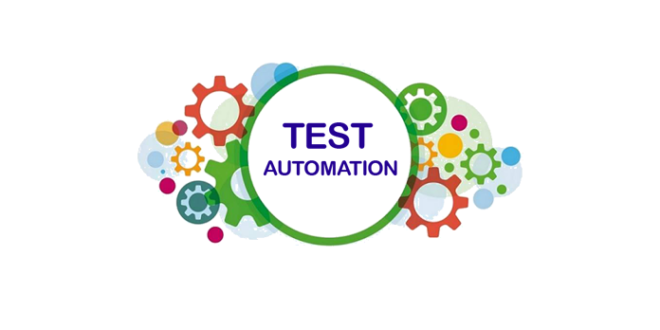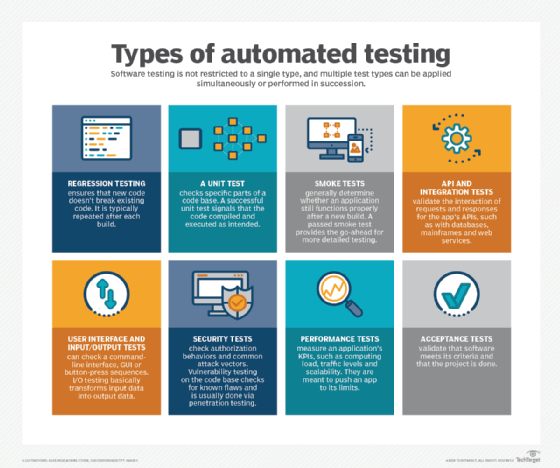Automation Testing: Secret Tips to Streamline Advancement Lifecycles
Automation Testing: Secret Tips to Streamline Advancement Lifecycles
Blog Article
From Handbook to Automated Testing: A Comprehensive Overview to Transitioning Smoothly and Effectively
In the realm of software testing, the change from manual to automated procedures has actually come to be a progressively important shift for organizations looking for to boost performance and precision in their testing techniques. The journey from handbook to automated testing is not without its difficulties, however when come close to purposefully and with a clear plan in mind, the advantages can be considerable.
Benefits of Automated Testing
Automated screening provides various advantages, boosting efficiency and accuracy in software program advancement procedures. Automated tests can be run at the same time on numerous gadgets and operating systems, considerably speeding up the screening phase compared to hands-on screening.
In addition, automated screening makes certain a greater degree of precision in detecting flaws. Uniformity in screening is additionally boosted, as automated examinations perform the very same steps exactly each time they are run.
Picking the Right Tools

First of all, examine your requirements and objectives. Comprehend the extent of your project, the modern technologies involved, and the ability of your team. This analysis will help you figure out the features and abilities you require in your testing devices.
Secondly, think about the compatibility of the devices with your existing systems and procedures. Seamless combination with your current software program development lifecycle is important to ensure a smooth shift to automation.
In addition, evaluate the scalability and adaptability of the devices. As your screening needs advance, the devices must have the ability to adjust and accommodate changes efficiently.
Lastly, element in the support and community around the tools. Robust assistance and an active user neighborhood can supply useful sources and help when applying automated testing. By thoroughly thinking about these facets, you can choose the right devices that align with your requirements and established the stage for a successful shift to automated screening.
Composing Effective Examination Scripts

When crafting examination scripts, it is vital to consider the particular requirements of the software being examined and make certain that the scripts attend to all essential capabilities. Clear and descriptive naming conventions for examination scripts and test situations can enhance readability and maintainability. In addition, integrating mistake handling systems within the test scripts can aid in identifying and dealing with problems quickly.
Additionally, organizing test scripts into modular elements can improve reusability and scalability, lowering redundancy and my explanation enhancing performance in examination manuscript maintenance. Normal reviews and updates to check manuscripts are critical to keep speed with progressing software demands and performances. By complying with these concepts, testers can produce effective and durable examination manuscripts that add considerably to the success of automated screening processes.
Integrating Automation Into Workflows
By effortlessly integrating automated testing tools like Selenium or Appium into the software growth lifecycle, groups can achieve faster comments on code modifications, leading to quicker insect discovery and resolution. This assimilation permits for continual screening throughout the advancement procedure, ensuring that any type of problems are determined early on, resulting in higher software program high quality. Proper integration of automation tools calls for partnership in between development, testing, and operations teams to develop a unified operations that optimizes performance and effectiveness in providing high-quality software program products.
Ensuring a Smooth Change
Successfully transitioning to automated screening involves meticulous planning and mindful implementation to minimize interruptions and optimize efficiency in the software development process - automation testing. To make sure a smooth change, it is vital to start by conducting a comprehensive assessment of the current screening procedures and identifying areas where automation can bring the most considerable advantages. Engaging with all stakeholders beforehand in the procedure, including programmers, testers, and job managers, is crucial for gathering support and buy-in for the automation effort
Interaction is crucial throughout this shift phase. Clear communication of the objectives, benefits, and expectations of automated testing website link helps to manage any type of resistance or concerns that might develop. Furthermore, supplying appropriate training and sources for staff member to upskill in automation devices and techniques is crucial for ensuring a successful transition.

Conclusion
To conclude, transitioning from guidebook to automated testing supplies countless benefits, including increased effectiveness and reliability. By selecting the suitable tools, composing efficient test manuscripts, and integrating automation flawlessly right into process, companies can ensure a smooth and successful shift. It is vital to accept automation as a valuable possession in software application testing procedures to improve total high quality and productivity.
In the realm of software program testing, the change from guidebook to automated processes has come to be a significantly vital shift for companies seeking to enhance efficiency and precision in their testing techniques. Automated examinations can be run concurrently on multiple tools and running systems, drastically speeding up the testing stage compared to hands-on testing. Consistency in screening is likewise improved, as automated tests implement the exact same actions exactly each time they are run.To guarantee the successful execution of selected screening devices, the development of reliable test manuscripts plays a vital duty in confirming the capability and performance of automated procedures - automation testing. By complying with these concepts, testers can develop durable and effective examination scripts that add substantially to the success of automated testing processes
Report this page